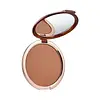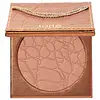What's inside
What's inside
 Key Ingredients
Key Ingredients

 Benefits
Benefits

 Concerns
Concerns

 Ingredients Side-by-side
Ingredients Side-by-side

C12-15 Alkyl Ethylhexanoate
EmollientZinc Stearate
Cosmetic ColorantMethyl Methacrylate/Glycol Dimethacrylate Crosspolymer
Alumina
AbrasiveLauroyl Lysine
Skin ConditioningPentaerythrityl Tetraethylhexanoate
EmollientCaprylyl Glycol
EmollientWater
Skin ConditioningBisabolol
MaskingPanthenyl Triacetate
Hexylene Glycol
EmulsifyingTriethoxycaprylylsilane
Silica
AbrasiveBHT
AntioxidantPotassium Sorbate
PreservativePhenoxyethanol
PreservativeFarnesyl Acetate
PerfumingFarnesol
PerfumingMica
Cosmetic ColorantCI 77891
Cosmetic ColorantCI 77491
Cosmetic ColorantCI 77492
Cosmetic ColorantCI 77499
Cosmetic ColorantCI 77007
Cosmetic ColorantCI 75470
Cosmetic ColorantCI 19140
Cosmetic ColorantC12-15 Alkyl Ethylhexanoate, Zinc Stearate, Methyl Methacrylate/Glycol Dimethacrylate Crosspolymer, Alumina, Lauroyl Lysine, Pentaerythrityl Tetraethylhexanoate, Caprylyl Glycol, Water, Bisabolol, Panthenyl Triacetate, Hexylene Glycol, Triethoxycaprylylsilane, Silica, BHT, Potassium Sorbate, Phenoxyethanol, Farnesyl Acetate, Farnesol, Mica, CI 77891, CI 77491, CI 77492, CI 77499, CI 77007, CI 75470, CI 19140
Mica
Cosmetic ColorantZinc Stearate
Cosmetic ColorantTriethylhexanoin
MaskingSynthetic Fluorphlogopite
Polymethyl Methacrylate
Zea Mays Starch
AbsorbentAvena Sativa Kernel Flour
AbrasivePhenoxyethanol
PreservativeAroma
Tocopheryl Acetate
AntioxidantDimethicone
EmollientTin Oxide
AbrasiveTrimethylolpropane Triisostearate
EmollientTrimethylsiloxysilicate
EmollientKaolin
AbrasiveBenzyl Benzoate
AntimicrobialCI 77891
Cosmetic ColorantIron Oxides
CI 77491
Cosmetic ColorantCI 77492
Cosmetic ColorantCI 77499
Cosmetic ColorantCI 77742
Cosmetic ColorantMica, Zinc Stearate, Triethylhexanoin, Synthetic Fluorphlogopite, Polymethyl Methacrylate, Zea Mays Starch, Avena Sativa Kernel Flour, Phenoxyethanol, Aroma, Tocopheryl Acetate, Dimethicone, Tin Oxide, Trimethylolpropane Triisostearate, Trimethylsiloxysilicate, Kaolin, Benzyl Benzoate, CI 77891, Iron Oxides, CI 77491, CI 77492, CI 77499, CI 77742
Ingredients Explained
These ingredients are found in both products.
Ingredients higher up in an ingredient list are typically present in a larger amount.
Ci 77491 is also hydrated iron III oxide. It's sole purpose is to give a red/pink hue to products.
Iron III oxides are classified as inorganic chemicals for coloring.
Synthetically created Ci 77491 is considered safer than those naturally found. This is because the synthetically created version may contain less impurities. Iron oxides are generally non-toxic and non-allergenic.
Learn more about CI 77491Ci 77492 is also hydrated iron III oxide. It's sole purpose is to give a yellow hue to products.
Iron III oxides are classified as inorganic chemicals for coloring.
Synthetically created Ci 77492 is considered safer than those naturally found. This is because the synthetically created version may contain less impurities. Iron oxides are generally non-toxic and non-allergenic.
Learn more about CI 77492Ci 77499 is also hydrated iron III oxide. It is created from mixing red and black iron oxides. This helps give shades of darkness to a product.
Iron III oxides are classified as inorganic chemicals for coloring.
Ci 77891 is a white pigment from Titanium dioxide. It is naturally found in minerals such as rutile and ilmenite.
It's main function is to add a white color to cosmetics. It can also be mixed with other colors to create different shades.
Ci 77891 is commonly found in sunscreens due to its ability to block UV rays.
Learn more about CI 77891Mica is a naturally occurring mineral used to add shimmer and color in cosmetics. It can also help improve the texture of a product or give it an opaque, white/silver color.
Serecite is the name for very fine but ragged grains of mica.
This ingredient is often coated with metal oxides like titanium dioxide. Trace amounts of heavy metals may be found in mica, but these metals are not harmful in our personal products.
Mica has been used since prehistoric times throughout the world. Ancient Egyptian, Indian, Greek, Roman, Aztec, and Chinese civilizations have used mica.
Learn more about MicaPhenoxyethanol is a preservative that has germicide, antimicrobial, and aromatic properties. Studies show that phenoxyethanol can prevent microbial growth. By itself, it has a scent that is similar to that of a rose.
It's often used in formulations along with Caprylyl Glycol to preserve the shelf life of products.
Zinc Stearate is the metal salt of stearic acid. It is a white solid used to bind, thicken, and lubricate products.
This ingredient is common in powder makeup, where it helps keep the powder together.
Zinc Stearate is hydrophobic and repels water.
This ingredient can be sourced from non-animal or animal sources. It is best to reach out to the brand to see where they source this ingredient from.
Learn more about Zinc Stearate